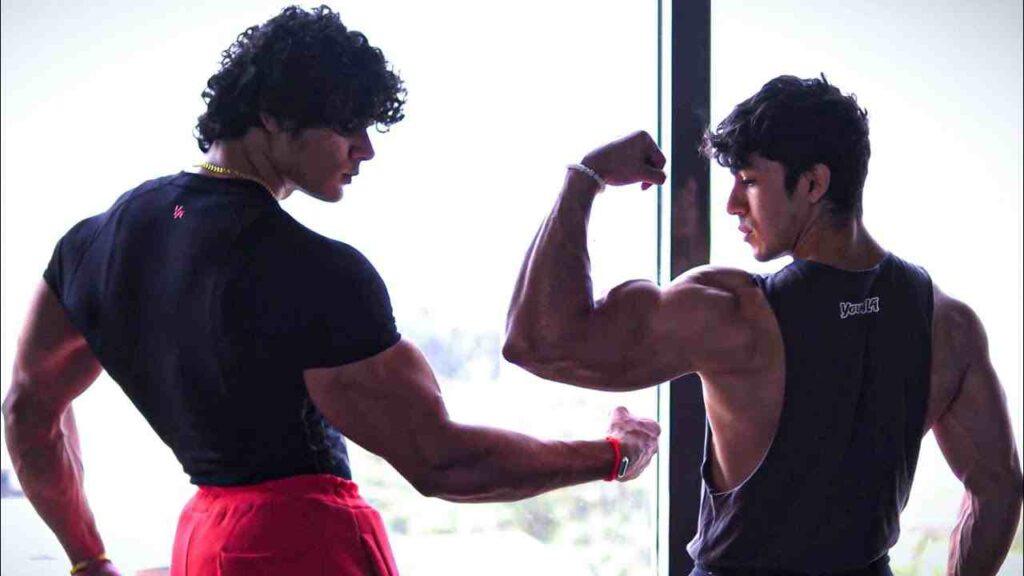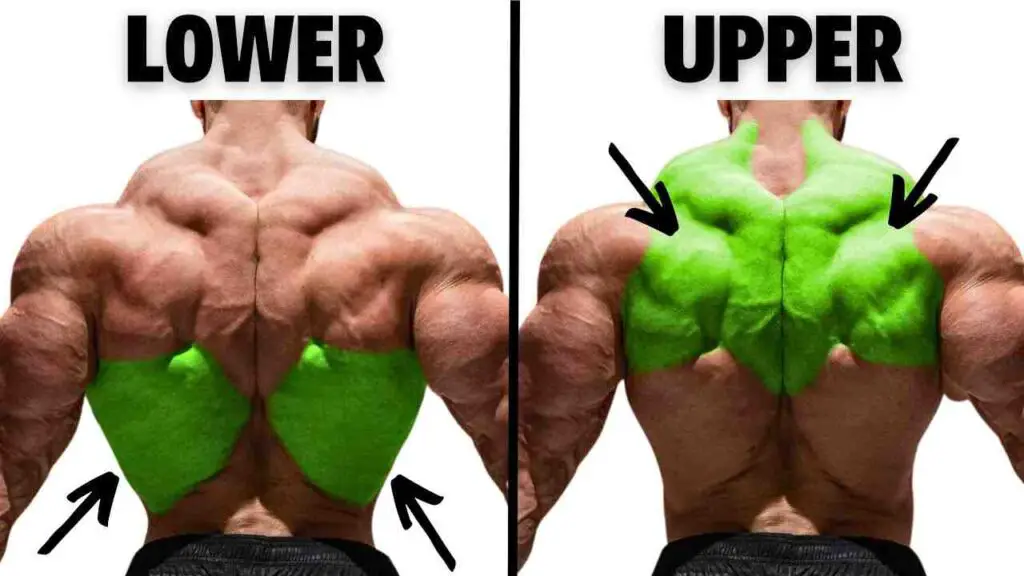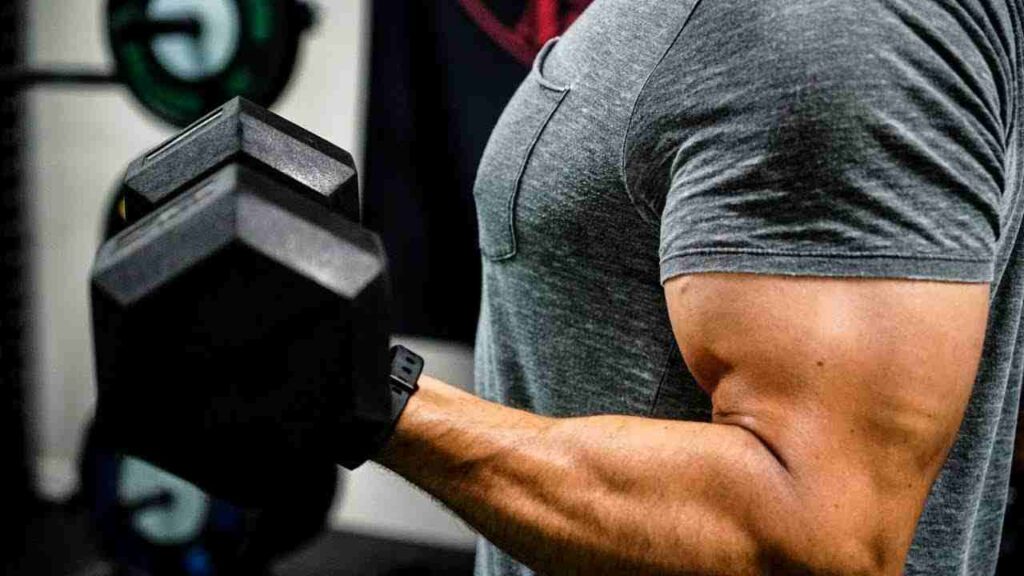Introduction
In the pursuit of strength, aesthetics, and overall fitness, it is essential to focus on various muscle groups, including the biceps. The biceps on the front of the upper arm play a crucial role in everyday activities, from lifting objects to performing more complex movements. While traditional gym-goers often rely on weights and machines to train their biceps, bodyweight exercises provide an equally effective and versatile alternative.
SHOP FOR THE PULL-UP BAR ON AMAZON
In this article, we will delve into the world of bodyweight exercises for biceps, exploring their benefits, the anatomy of the biceps, and a range of exercises that can be performed without any additional equipment. Whether you are a fitness enthusiast looking to diversify your workout routine or a beginner seeking to build strength without hitting the gym, these exercises will be your allies.
We will guide you through each exercise, emphasizing proper technique and form to maximize results while minimizing the risk of injury. Additionally, we’ll discuss how to create an effective bodyweight biceps workout routine and incorporate progressive overload to challenge your muscles continuously.
Understanding the Anatomy of the Biceps
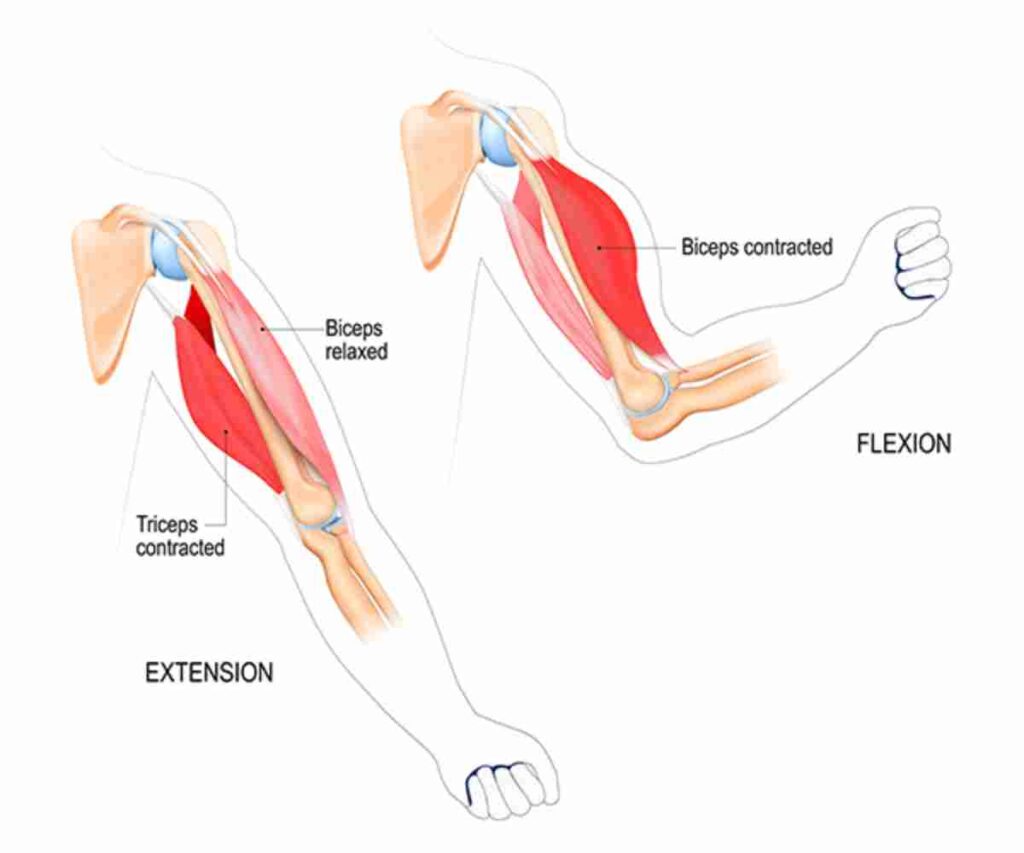
The biceps, short for biceps brachii, is a prominent muscle in the upper arm, consisting of two heads: the long head and the short head. These heads originate from different points on the scapula (shoulder blade) and come together to attach to the radius bone in the forearm. The biceps are responsible for elbow flexion, which means they help in bending the arm at the elbow joint. Additionally, the biceps play a role in forearm supination, where the palm is turned upward.
How the Biceps Function in Everyday Movements
The biceps are involved in a wide range of everyday movements, making them essential for various activities. Some common examples of how the biceps function include:
- Lifting: When you pick up a bag, lift groceries, or carry a child, your biceps contract to bend the elbow and lift the weight.
- Pulling: During pulling motions, such as closing a door or using a rowing machine, the biceps help in elbow flexion.
- Rotating: When you turn a doorknob or use a screwdriver, the biceps assist in forearm supination.
- Stabilizing: The biceps provide stability during gripping actions, like holding a heavy object or performing a pull-up.
Importance of Targeting All Biceps Heads
To maximize biceps development and overall arm strength, it’s crucial to target both the long head and short head of the biceps. Each head has a slightly different attachment point and contributes to different aspects of arm movement. By targeting both heads, you ensure balanced muscle development and reduce the risk of muscular imbalances.
The long head, originating from the scapula’s supraglenoid tubercle, is more involved in movements where the shoulder is in a flexed position, such as when performing incline exercises or movements that require the arm to be positioned above the head.
The short head, originating from the coracoid process of the scapula, plays a more significant role in movements where the shoulder is in a neutral or extended position, like during regular curls or exercises with the arms by the sides.
SHOP FOR THE RESISTANCE BAND SET ON AMAZON
Incorporating exercises that target both heads of the biceps into your workout routine ensures comprehensive muscle development, enhances functional strength, and promotes better aesthetics for a well-rounded, defined arm appearance. Some bodyweight exercises, like pull-ups and chin-ups, effectively engage both biceps heads, making them valuable additions to any bodyweight biceps workout.
Top Bodyweight Exercises for Biceps

Here are some of the top bodyweight exercises for targeting the biceps:
A. Pull-Ups
Strengthen and sculpt your biceps with these challenging upper-body exercises that target multiple muscle groups simultaneously.
1. Underhand Grip Pull-Ups: This variation targets the biceps, engaging the muscles throughout the pull-up motion.
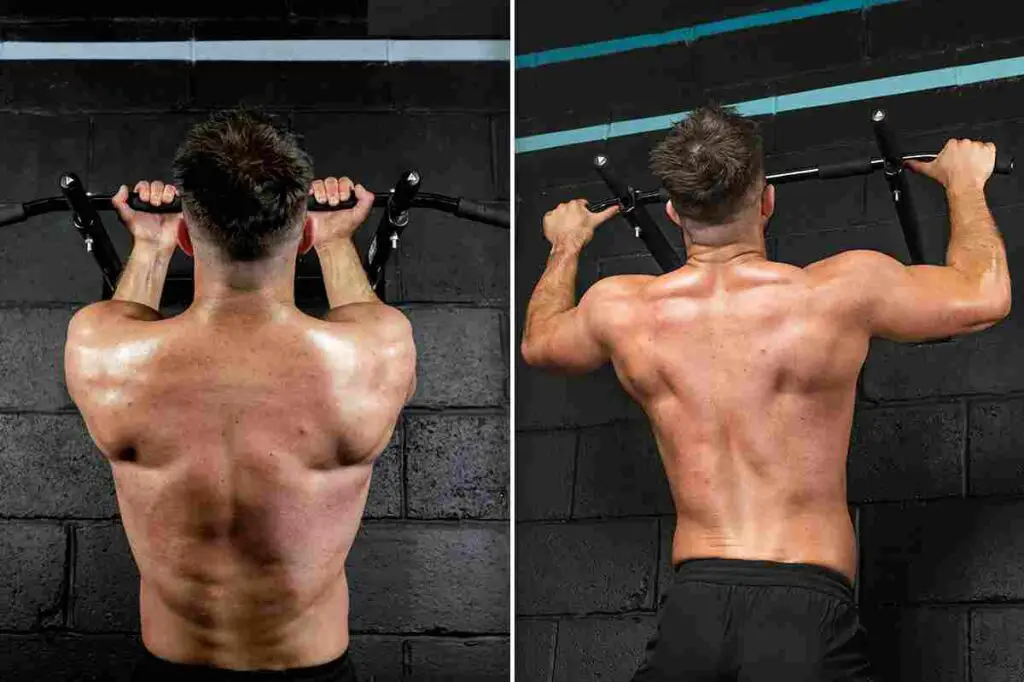
How to perform: Hang from a pull-up bar with an underhand grip, hands shoulder-width apart. Pull your body up until your chin is above the bar, then lower yourself back down.
Tips: Keep your core engaged, avoid swinging, and maintain a controlled pace.
Sets & Reps: Start with 3 sets of 5-8 repetitions and gradually increase as you progress.
2. Close Grip Pull-Ups: Focusing on the inner biceps, this exercise also engages the forearms and back muscles.
How to perform: Perform a pull-up with your hands close together, around 6 inches apart.
Tips: Squeeze your biceps at the top of the movement, and avoid using momentum to pull yourself up.
Sets & Reps: Aim for 3 sets of 6-10 repetitions, gradually increasing the intensity as you get stronger.
3. Chin-Ups: While primarily targeting the lats, chin-ups are effective for building bicep strength and size.

How to perform: Use an underhand grip, hands slightly wider than shoulder-width apart. Pull your body up, bringing your chin above the bar.
Tips: Focus on the mind-muscle connection with your biceps throughout the movement.
Sets & Reps: Start with 3 sets of 8-12 repetitions and adjust according to your fitness level.
B. Dips
Build impressive arm strength and definition by incorporating these compound bodyweight movements that engage your biceps and triceps effectively.
1. Parallel Bar Dips: These dips target the triceps and chest but also activate the biceps as stabilizing muscles.
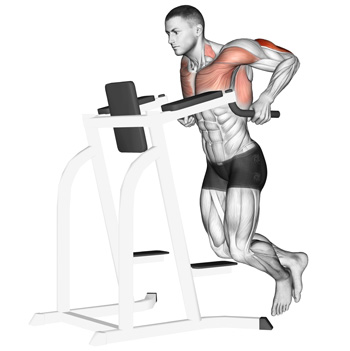
How to perform: Grip parallel bars with your arms straight, then lower your body until your elbows are at a 90-degree angle. Push yourself back up to the starting position.
Tips: Lean slightly forward to put more emphasis on the biceps during the movement.
Sets & Reps: Aim for 3 sets of 8-12 repetitions, gradually increasing the intensity.
2. Bench Dips: This variation can effectively target the biceps while using a bench or sturdy surface.
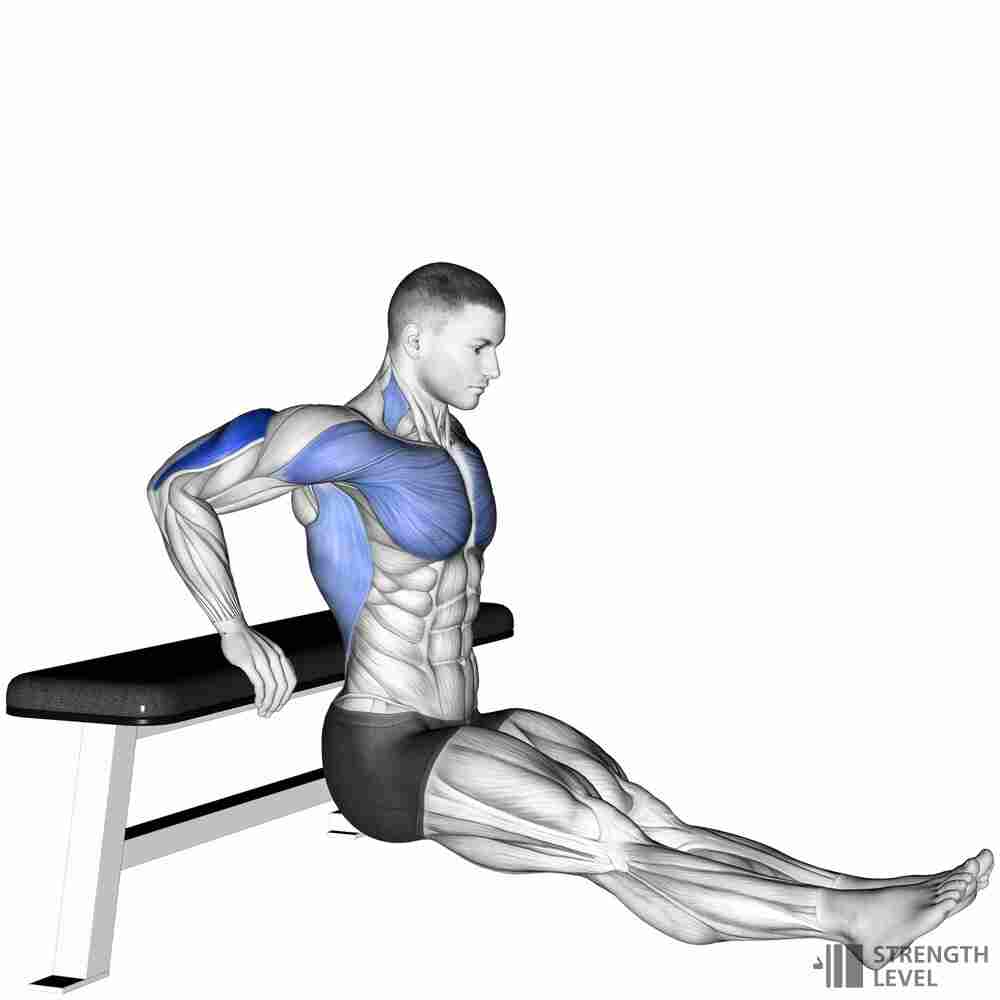
How to perform: Sit on the edge of a bench with your hands beside your hips, fingers pointing forward. Slide your hips off the bench and lower your body by bending your elbows. Push yourself back up to the starting position.
Tips: Keep your back close to the bench and avoid fully locking out your elbows.
Sets & Reps: Begin with 3 sets of 10-15 repetitions and adjust based on your strength level.
C. Push-Up Variations
Elevate your biceps workout with diverse push-up variations that not only challenge your chest but also engage your biceps for well-rounded upper-body training.
1. Diamond Push-Ups: This challenging push-up variation heavily engages the triceps and biceps.
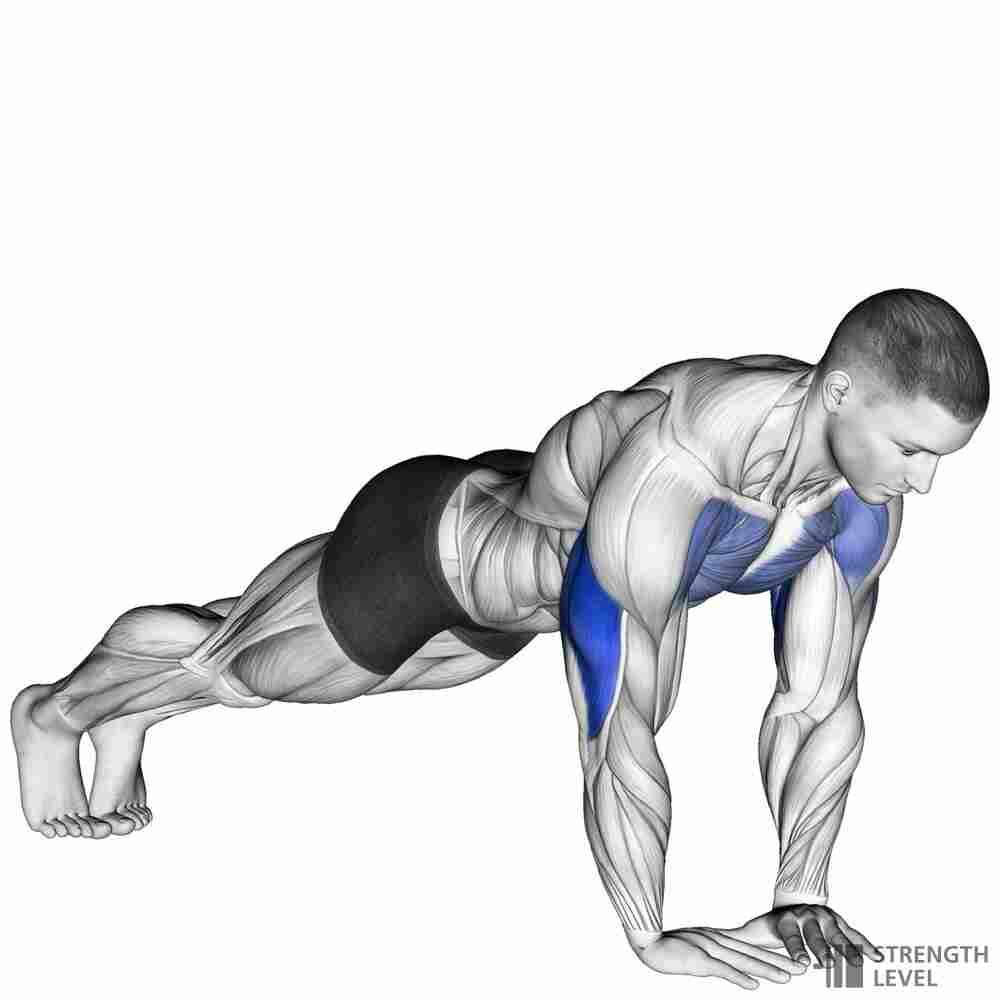
How to perform: Assume a push-up position with your hands close together, forming a diamond shape. Lower your chest towards your hands and push back up.
Tips: Keep your elbows close to your body during the movement.
Sets & Reps: Start with 3 sets of 6-10 repetitions, gradually increasing the difficulty.
2. Spiderman Push-Ups: These push-ups work the entire upper body, including the biceps, while also engaging the core.
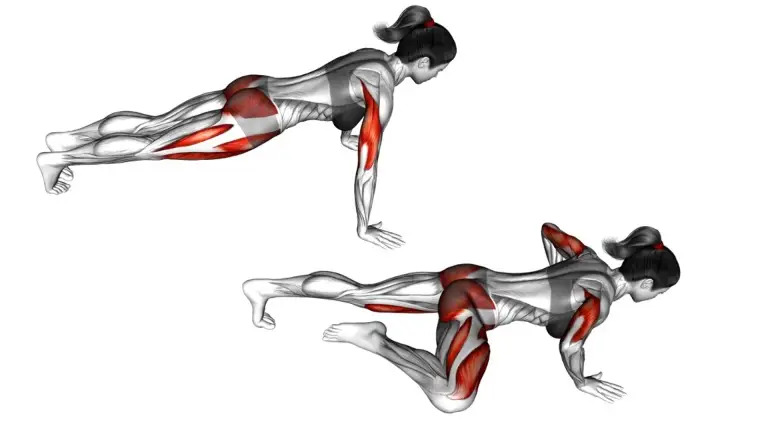
How to perform: As you lower your body, lift one knee toward the elbow on the same side. Alternate sides with each repetition.
Tips: Focus on controlled movement and maintain a straight line from head to heels.
Sets & Reps: Aim for 3 sets of 8-12 repetitions, adjusting as needed.
D. Inverted Rows
This bodyweight row variation targets the biceps, upper back, and rear shoulders.
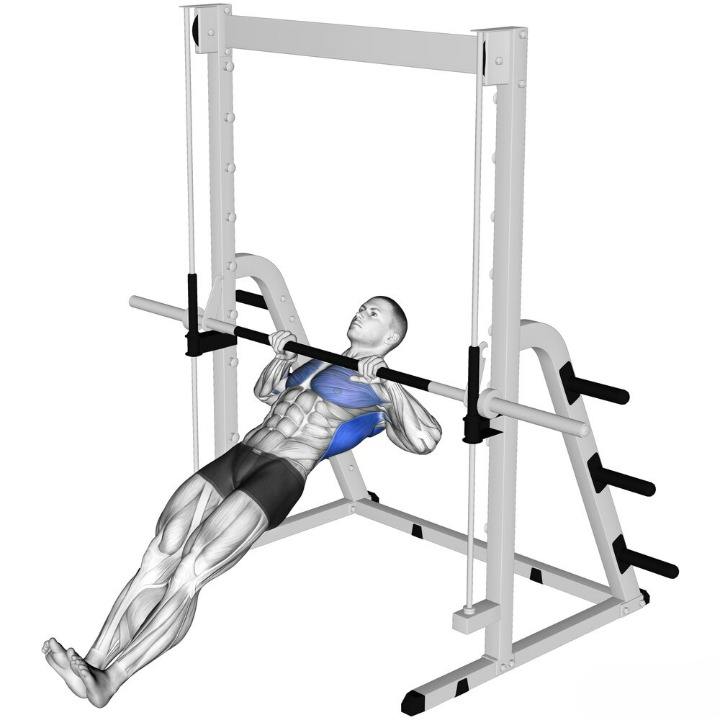
How to perform: Set up a bar at waist height or use suspension straps. Lie underneath it with your feet on the ground, pull your body up towards the bar, then lower yourself back down.
Tips: Keep your body in a straight line throughout the movement.
Sets & Reps: Start with 3 sets of 8-12 repetitions, increasing the difficulty as you progress.
E. Isometric Holds
Improve biceps endurance and stability with isometric holds, engaging your muscles in static contractions to build strength over time.
1. Flexed Arm Hang: An isometric exercise that engages the biceps, shoulders, and forearms.
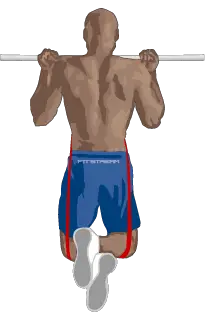
How to perform: Jump up to a pull-up bar and hold the top position, keeping your chin above the bar for as long as possible.
Tips: Focus on maintaining tension in your biceps and avoid swinging.
Sets & Reps: Hold for as long as possible, aiming for at least 20-30 seconds.
2. Static Bicep Curls: This isometric hold targets the biceps effectively without the need for equipment.
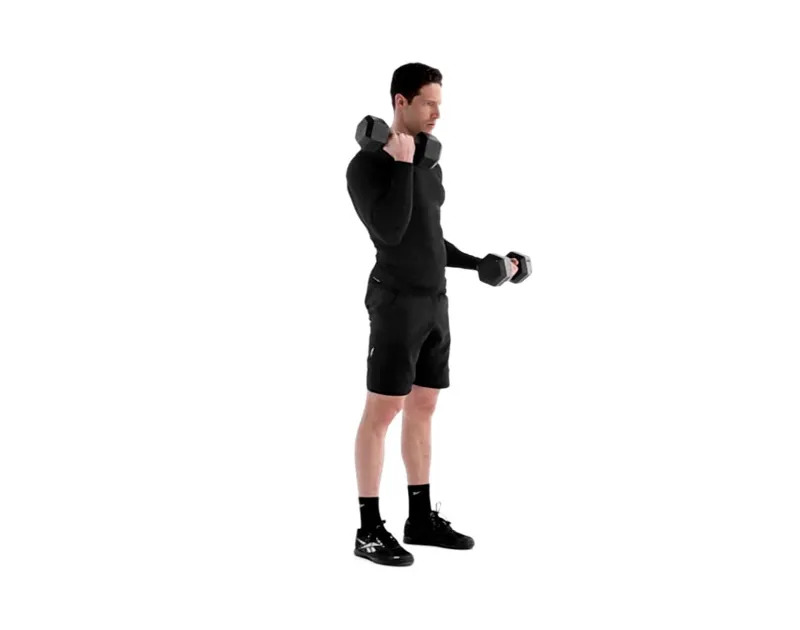
How to perform: Position your arms at a 90-degree angle and flex your biceps as hard as possible, as if you’re curling a weight.
Tips: Squeeze your biceps throughout the hold and breathe steadily.
Sets & Reps: Perform 3 sets of 30-second holds, increasing the duration over time.
Remember to warm up before starting the workout and cool down afterward. Allow adequate rest between sets and exercises for proper muscle recovery. Adjust the sets and reps according to your fitness level and progressively increase the intensity to continue challenging your biceps and achieving growth over time.
Proper Technique and Form
Master the correct form to maximize biceps gains and prevent injuries in bodyweight exercises.
A. Importance of Correct Form to Prevent Injuries
The importance of correct form to prevent injuries cannot be overstated. When you exercise with proper form, you are less likely to put unnecessary stress on your joints and muscles, which can lead to pain and injury. Proper form also helps you to move more efficiently and effectively, and can improve your overall performance.
Here are some of the benefits of using proper form when exercising:
- Reduces your risk of injury. When you use the proper form, you are less likely to put unnecessary stress on your joints and muscles, which can lead to pain and injury.
- Helps you move more efficiently. When you use the proper form, you are able to move more efficiently and effectively. This can help you to improve your performance and reach your fitness goals faster.
- Allows you to have a full range of motion. Proper form helps you to maintain a full range of motion in your joints, which can help to prevent injuries and improve your flexibility.
- Makes your workouts more enjoyable. When you are using the proper form, you are less likely to experience pain or discomfort during your workouts. This can make your workouts more enjoyable and help you to stick with your fitness routine.
If you are new to exercise or are unsure about how to perform a particular exercise, it is always a good idea to ask a qualified fitness professional for help. They can show you how to perform the exercise correctly and help you to avoid injury.
B. Common Mistakes to Avoid
- Overarching the back during pull-ups and chin-ups, putting excessive strain on the lower back.
- Using momentum to swing the body during exercises, reduces the effectiveness of the biceps workout.
- Failing to engage the core muscles, leads to instability and compromised form.
- Neglecting a full range of motion, limiting the engagement of all biceps heads.
- Gripping bars or handles too tightly causes unnecessary tension in the forearms and wrists.
- Performing dips with elbows flaring out, which puts undue stress on the shoulders.
- Raising the shoulders during push-ups instead of keeping them down and back, leading to neck strain.
- Not maintaining a straight line from head to heels during plank-based exercises, leads to poor posture.
- Allowing the elbows to move forward excessively during inverted rows, minimizing biceps activation.
- Ignoring proper breathing techniques, which can impact overall performance and stability.
C. Tips for Correct Form
Here are some tips for correct form during exercise:
- Start with a warm-up. This will help to prepare your muscles and joints for activity and reduce your risk of injury.
- Pay attention to your body. As you’re exercising, be aware of your posture and alignment. If you feel any pain, stop the exercise and adjust your form.
- Use a mirror or a spotter. This can help you to see your form and make sure it’s correct.
- Lift weights that are challenging but not too heavy. If you can’t lift the weight with good form, it’s too heavy.
- Move slowly and controlled. This will help you to focus on your form and avoid injuries.
- Breathe deeply. This will help to keep your muscles oxygenated and prevent you from getting lightheaded.
- Listen to your body. If you’re tired, take a break. Don’t push yourself too hard.
SHOP FOR THE DIP STATION ON AMAZON
Remember, quality over quantity is crucial in bodyweight exercises for biceps. Even if you can perform only a few repetitions with proper form, it’s better than doing many with poor form. Take your time to learn and practice the correct technique to get the most out of your workouts while keeping your biceps safe and injury-free.
Creating an Effective Bodyweight Biceps Workout Routine
An effective bodyweight biceps workout routine can help you develop strong and defined biceps without the need for any equipment. Here’s a comprehensive workout plan that targets the biceps and promotes muscle growth and strength:
Warm-up (5-10 minutes):
- Jumping jacks
- Arm circles
- Shoulder taps
- Wrist rotations
Pull-Ups:
- Underhand Grip Pull-Ups: 3 sets x 8-10 reps
- Close Grip Pull-Ups: 3 sets x 8-10 reps
- Chin-Ups: 3 sets x 8-10 reps
Dips:
- Parallel Bar Dips: 3 sets x 10-12 reps
- Bench Dips: 3 sets x 10-12 reps
Push-Up Variations:
- Diamond Push-Ups: 3 sets x 10-12 reps
- Spiderman Push-Ups: 3 sets x 10-12 reps
Inverted Rows:
- Bodyweight Rows: 3 sets x 10-12 reps
Isometric Holds:
- Flexed Arm Hang: Hold for 30-45 seconds per set
- Static Bicep Curls: Hold for 30-45 seconds per set
Superset: (Combine two exercises without rest)
- Close Grip Push-Ups: 3 sets x 12-15 reps
- Wide Grip Push-Ups: 3 sets x 12-15 reps
Superset:
- Incline Push-Ups: 3 sets x 12-15 reps
- Decline Push-Ups: 3 sets x 12-15 reps
Cool-down (5-10 minutes):
- Arm stretches
- Shoulder stretches
- Wrist stretches
Tips for an Effective Routine:
- Perform this routine 2-3 times per week with at least one rest day between sessions to allow for muscle recovery and growth.
- Focus on slow and controlled movements to maximize muscle engagement and prevent injury.
- Progressively increase the number of repetitions or sets as you gain strength and confidence.
- Maintain proper form throughout the exercises to avoid strain on other muscle groups.
- Incorporate a balanced diet rich in protein and nutrients to support muscle recovery and growth.
SHOP FOR THE PUSH-UP BAR ON AMAZON
Remember that consistency is key to achieving results. Listen to your body and adjust the intensity as needed.
Incorporating Progressive Overload
Progressive overload is a fundamental principle in strength training that involves gradually increasing the demands placed on the muscles over time. The concept is based on the idea that muscles adapt and grow stronger in response to the stress imposed on them.
To achieve continuous gains in strength and muscle development, it is essential to progressively increase the intensity, resistance, or volume of your workouts. This can be achieved through various means, such as adding more weight, increasing repetitions, or altering exercise difficulty.
Increasing difficulty with bodyweight exercises
For bodyweight exercises targeting the biceps, increasing difficulty can be accomplished by tweaking certain variables. For example:
- Leveraging leverage: Adjusting body positioning to alter the leverage during exercises can make them more challenging. For instance, elevating feet during push-ups or pull-ups.
- Reducing stability: Performing exercises on unstable surfaces, like using a suspension trainer, can engage more stabilizing muscles and intensify the workout.
- Slowing down movements: Performing slower and controlled repetitions increases time under tension, making the exercise more challenging.
- Adding variations: Utilizing different hand grips or hand placements during exercises can shift the emphasis on the biceps and add difficulty.
Tracking and measuring progress
To ensure progressive overload, it’s crucial to track and measure your progress over time. Some effective ways to do this include:
- Keeping a workout journal: Record the exercises performed, the number of sets and reps, and any additional notes about your workout.
- Tracking strength gains: Regularly assess your performance by noting how many repetitions or sets you can perform with good form.
- Monitoring exercise difficulty: Pay attention to how you feel during and after workouts, and adjust the intensity if exercises become too easy.
- Measuring muscle growth: Use measurements and photos to observe changes in your biceps’ size and definition over time.
SHOP FOR THE FITNESS TRACKER ON AMAZON
By incorporating progressive overload, you challenge your biceps with increasing demands, forcing them to adapt and grow stronger, ensuring continued progress in your bodyweight training journey. Remember to be consistent and patient, as strength gains and muscle development take time and dedication.
Nutrition for Biceps Growth and Recovery
Proper nutrition plays a significant role in supporting biceps growth and facilitating recovery after intense bodyweight exercises.
A. The Role of Nutrition in Biceps Growth
- Protein: Protein is essential for muscle growth and repair. It provides the building blocks (amino acids) required for muscle tissue synthesis.
- Calories: Adequate caloric intake is necessary to support muscle growth. Consuming more calories than your body expends helps fuel the muscle-building process.
- Carbohydrates: Carbs provide energy for workouts and replenish glycogen stores in muscles, aiding in recovery and performance.
- Healthy Fats: Fats are crucial for hormone production and overall health, contributing to optimal muscle function and recovery.
B. Protein-Rich Diet for Biceps
Here are some protein-rich foods that can help you build bigger biceps:
- Lean meats: Chicken, turkey, fish, and lean beef are all excellent sources of protein. They are also low in fat and calories, making them a good choice for people who are trying to lose weight or build muscle.
- Eggs: Eggs are a complete protein, meaning they contain all nine essential amino acids. They are also a good source of choline, which is important for muscle health.
- Dairy products: Greek yogurt, cottage cheese, and milk are all good sources of protein. They are also a good source of calcium, which is important for bone health.
- Beans and lentils: Beans and lentils are a great source of plant-based protein. They are also a good source of fiber, which can help you feel full and satisfied.
- Nuts and seeds: Nuts and seeds are a good source of protein and healthy fats. They are also a good source of fiber and vitamins and minerals.
SHOP FOR THE ANKLE WEIGHTS ON AMAZON
In addition to eating protein-rich foods, it is also important to strength train your biceps regularly. Strength training helps to break down muscle tissue, which then repairs itself and becomes stronger.
Here is a sample meal plan for a protein-rich diet for biceps:
Breakfast:
- Oatmeal with Greek yogurt and berries
- Eggs with whole-wheat toast
- Protein shake with fruit and spinach
Lunch:
- Salad with grilled chicken or fish
- Tuna salad sandwich on whole-wheat bread
- Lentil soup
Dinner:
- Salmon with roasted vegetables
- Chicken stir-fry with brown rice
- Black bean burgers with sweet potato fries
Snacks:
- Hard-boiled eggs
- Greek yogurt with nuts
- Trail mix
This is just a sample meal plan, and you may need to adjust it based on your individual needs and preferences. However, it should give you a good starting point for creating a protein-rich diet that will help you build bigger biceps.
c. Post-workout recovery tips
Here are some post-workout recovery tips that can help you get back to your best faster:
- Hydrate. Drink plenty of water or a sports drink to replenish your fluids and electrolytes.
- Eat a protein-rich snack or meal. Protein helps your muscles repair and rebuild after a workout.
- Stretch. Stretching helps to improve your flexibility and range of motion, and it can also help to reduce muscle soreness.
- Get enough sleep. Sleep is essential for muscle recovery. Aim for 7-8 hours of sleep per night.
- Avoid alcohol and caffeine. Alcohol and caffeine can dehydrate you and make it harder for your body to recover.
- Massage. Massage can help to reduce muscle soreness and improve circulation.
- Take a warm bath or shower. A warm bath or shower can help to relax your muscles and promote recovery.
- Ice your muscles. If you’re feeling sore, you can apply ice to your muscles for 20 minutes at a time, several times a day.
- Listen to your body. If you’re feeling pain, take a break. Don’t push yourself too hard, or you could risk injury.
FAQs
Q.1 Can bodyweight exercises alone help me build significant biceps mass?
Ans. While bodyweight exercises can undoubtedly contribute to biceps growth, achieving significant mass may be more challenging compared to using heavy weights. However, you can still develop well-defined and strong biceps by focusing on form, progressive overload, and proper nutrition.
Q.2 Are bodyweight exercises suitable for beginners?
Ans. Yes, bodyweight exercises are an excellent option for beginners as they allow you to control the resistance and intensity of the workouts. They also reduce the risk of injury associated with using heavy weights. Start with simple exercises and gradually progress to more challenging variations as your strength improves.
Q.3 Can I modify bodyweight exercises if I have wrist or shoulder issues?
Ans. Yes, modifications can be made to accommodate individuals with wrist or shoulder problems. For instance, if regular push-ups cause discomfort, you can perform push-ups on your knees or against a wall. Always listen to your body and consult with a fitness professional if you have specific concerns.
Q.4 Will bodyweight exercises for biceps help with other upper body muscles?
Ans. Yes, many bodyweight exercises engage multiple muscle groups simultaneously. While focusing on the biceps, exercises like pull-ups, dips, and push-ups also activate muscles in the back, chest, shoulders, and core, leading to a well-rounded upper-body workout.
Q.5 Can I combine bodyweight exercises with other biceps workouts using weights?
Ans. Absolutely! Incorporating a variety of exercises into your routine, including both bodyweight and weighted exercises, can provide excellent results. This combination allows you to target the biceps from different angles, promoting muscle growth and overall strength.
Q.6 Is there any risk of overtraining with bodyweight exercises for biceps?
Ans. Yes, overtraining can occur if you don’t allow enough time for your muscles to recover between workouts. It’s essential to incorporate rest days into your routine and avoid working the same muscle groups on consecutive days.
Q.7 Can I achieve visible biceps without using any equipment?
Ans. Yes, you can definitely achieve visible and well-defined biceps through consistent and proper bodyweight training. Focus on progressive overload, proper form, and a balanced diet to support muscle growth and development.
Conclusion
In conclusion, bodyweight exercises for biceps offer an effective and accessible way to strengthen and sculpt the arm muscles without the need for expensive equipment or a gym membership. By focusing on exercises like pull-ups, dips, push-up variations, inverted rows, and isometric holds, individuals can effectively target their biceps and promote overall upper body strength.
Consistency and proper form are key to maximizing the benefits of these exercises while minimizing the risk of injuries. Remember to incorporate progressive overload and consider supplementing with resistance bands for added challenge and variety. Alongside a well-balanced diet and adequate rest, bodyweight biceps exercises can lead to noticeable gains and improved muscle definition over time.
SHOP FOR THE GYMNASTIC RINGS ON AMAZON
Start incorporating these bodyweight exercises into your routine, and you’ll be well on your way to achieving strong, well-developed biceps that not only enhance your physical appearance but also support your daily functional movements.

Good day, and welcome to Fitthour. My name is Shubham Vijay, and I am a certified personal trainer and nutrition coach with 6 years of experience in the fitness industry. At Fitthour, we specialize in types of training, such as strength training, cardio, or HIIT, and our mission is to help clients achieve their fitness goals and improve their overall health.

